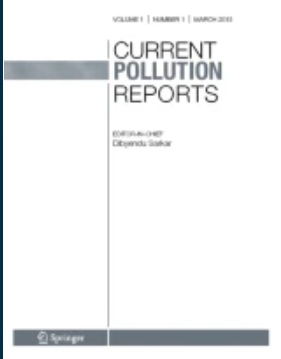微塑料和纳米塑料在斑马鱼体内的生物积累和毒性作用:综述
摘要
审查目的联合国环境规划署报告称,全球每年生产超过4.6亿吨塑料,其中一半是一次性的。每年,大约有800万吨这种塑料废物最终进入海洋、河流和湖泊,导致向水生环境释放的微塑料和纳米塑料(MNPs)不断增加。重要的是,微塑料已经渗透到水生生物、食物链,甚至人体器官,包括新生儿的胎盘。其影响的深度和广度已成为影响世界的环境问题。最近,MNPs的研究越来越多地集中在了解这些颗粒在不同生态系统和物种中的生物积累,以及它们潜在的毒理学效应,因为它们在环境中的持久性,易于被生物体摄入,以及穿越生物屏障的能力。研究表明,MNPs可以在水生生物(如鱼类和无脊椎动物)中积累,从而通过食物网导致潜在的生物积累和生物放大。例如,在水生物种的消化系统、鳃和肝脏等各种器官中都发现了MNPs,对它们的健康、繁殖和行为构成了威胁。从毒理学上讲,MNPs诱导了一系列的不良反应,从氧化应激和炎症开始,这可以通过暴露于聚苯乙烯NPs的胚胎中活性氧(ROS)的增加和IL-1β等促炎基因的上调来证明。这些细胞破坏进展为发育迟缓,如孵化率和幼虫生长降低,并延伸到神经毒性结果,包括改变游泳行为和抑制神经递质功能。此外,成人的生殖障碍和令人惊讶的跨代效应——未暴露的后代表现出生育能力下降和基因表达改变——强调了MNPs的普遍和潜在的遗传影响。这些发现强调了进一步探索MNPs生物积累和体内毒性效应的多维影响的重要性。摘要nps在世界范围内的水生环境中被广泛发现,其对水生生态系统和生物的潜在威胁引起了人们的高度关注。斑马鱼(Danio rerio)是环境毒理学中的关键模式生物,因其生物学特性、与人类的遗传相似性以及进行全生命周期研究的能力而受到重视,这些都为研究与MNPs相关的生态风险提供了重要见解。MNPs可以在斑马鱼的不同发育阶段通过摄入和呼吸进入体内。小型MNPs能够穿过血脑屏障和肠道屏障,扩散到肝脏、心脏和大脑等不同器官。MNPs暴露可通过物理和化学过程导致毒性作用,包括生长和发育毒性、氧化应激、神经毒性、心脏毒性、遗传毒性和免疫毒性。尽管研究揭示了MNPs在多个器官系统中的毒性作用,但仍存在一些研究空白和挑战。MNPs在斑马鱼体内的ADME(吸收、分布、代谢和排泄)过程尚未得到定量和机制的阐明。此外,长期低浓度自然环境中毒性相关和生态影响的调控机制以及复杂的相互作用仍不清楚。因此,加强环境管理和风险评估,建立更严格的法规来减少塑料污染,并开发有效的监测和补救技术来解决这一全球性问题至关重要。总体而言,本综述对MNPs在斑马鱼中的毒性作用和潜在机制进行了全面分析,为未来对其生态风险的研究提供了重要见解。Purpose of Review
The United Nations Environment Programme has reported that over 460 million tons of plastic are produced globally each year, with half being disposable. Each year, approximately 8 million tons of this plastic waste end up in oceans, rivers, and lakes, resulting in a continuous rise in the release of micro- and nanoplastics (MNPs) into the aquatic environment. Importantly, microplastics have penetrated aquatic organisms, food chains, and even human organs, including the placenta of newborns. The depth and scope of their impact have become an environmental problem affecting the world.
Recent Findings
Recently, MNPs research has increasingly focused on understanding the bioaccumulation of these particles across diverse ecosystems and species, as well as their potential toxicological effects, due to their persistence in the environment, ease of ingestion by organisms, and ability to traverse biological barriers. Studies have demonstrated that MNPs can accumulate in aquatic organisms, such as fish and invertebrates, leading to potential bioaccumulation and biomagnification through the food web. For instance, MNPs have been found in various organs, including the digestive system, gills, and liver of aquatic species, posing risks to their health, reproduction, and behavior. Toxicologically, MNPs induce a range of adverse effects, starting with oxidative stress and inflammation, as evidenced by increased reactive oxygen species (ROS) and upregulated pro-inflammatory genes like IL-1β in embryos exposed to polystyrene NPs. These cellular disruptions progress to developmental delays, such as reduced hatching rates and larval growth, and extend to neurotoxic outcomes, including altered swimming behavior and inhibited neurotransmitter function. Furthermore, reproductive impairments in adults and surprising transgenerational effects—where unexposed offspring exhibit reduced fertility and altered gene expression—underscore the pervasive and potentially heritable impact of MNPs. These findings highlight the importance of further exploring the multidimensional impacts of MNPs bioaccumulation and toxic effects in vivo.
Summary
MNPs have been widely detected in aquatic environments worldwide, and their potential threats to aquatic ecosystems and organisms are of significant concern. Zebrafish (Danio rerio) is a pivotal model organism in environmental toxicology, valued for its biological characteristics, genetic similarities to humans, and the capacity for full life cycle studies, which together provide crucial insights into the ecological risks associated with MNPs. MNPs can enter the zebrafish body at various developmental stages through both ingestion and respiration. Small-sized MNPs have the ability to cross the blood-–brain barrier and intestinal barrier, spreading throughout different organs such as the liver, heart and brain. Exposure to MNPs can lead to toxic effects through both physical and chemical processes, including growth and developmental toxicity, oxidative stress, neurotoxicity, cardiotoxicity, genotoxicity, and immunotoxicity. Despite studies revealing the toxic effects of MNPs across multiple organ systems, several research gaps and challenges remain. The ADME (absorption, distribution, metabolism, and excretion) process of MNPs in zebrafish has yet to be quantitatively and mechanistically elucidated. Additionally, the regulatory mechanisms of toxicity associated and ecological impacts and complex interactions within natural environments with long-term low-concentration remain unclear. Thus, it is crucial to strengthen environmental management and risk aassessment, establish stricter regulations to reduce plastic pollution, and develop effective monitoring and remediation technologies to address this global issue. Overall, this review provides a comprehensive analysis of the toxic effects and underlying mechanisms of MNPs in zebrafish, offering critical insights that inform future research into their ecological risks.

 求助内容:
求助内容: 应助结果提醒方式:
应助结果提醒方式:


